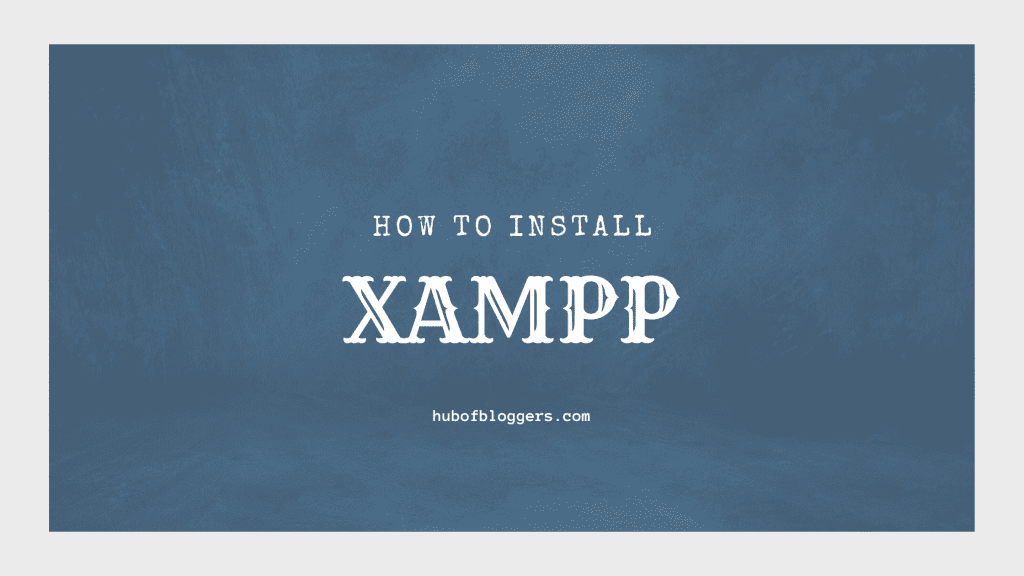If you’re interested in web development, you may have heard of XAMPP.
XAMPP is a free and open-source web server solution stack that includes Apache, MySQL, PHP, and Perl.
XAMPP can be used for a variety of purposes, such as testing websites locally, developing web applications, and creating a local server environment for WordPress.
Why use XAMPP?
Using XAMPP allows you to set up a local server environment on your own computer without having to purchase web hosting or pay for a domain name.
It also allows you to test and experiment with web applications and websites without affecting your live site.
XAMPP is easy to install and use, making it a popular choice among developers and web designers.
In this guide, we’ll show you how to install XAMPP on your Windows machine and use it to set up a local WordPress site. Follow along for a step-by-step process.
Steps to Install XAMPP
1. First, you need to download the XAMPP installer for your operating system from the official website (https://www.apachefriends.org/index.html). Make sure you choose the correct version for your operating system.
2. Once the download is complete, double-click on the downloaded file to launch the installer.
3. Select the components you want to install. XAMPP includes Apache, MySQL, PHP, and other software, so choose the components you need.
4. Choose the installation directory. By default, XAMPP is installed in the C:\xampp directory on Windows and the /opt/lampp directory on Linux. You can choose a different directory if you prefer.
5. Click the “Install” button to start the installation process.
6. During the installation, you may be asked to allow certain firewall permissions. Click “Allow Access” to ensure that XAMPP can communicate with your computer’s network.
7. Once the installation is complete, you can launch XAMPP by running the “xampp-control.exe” file on Windows or the “manager-linux-x64.run” file on Linux.
8. Once XAMPP is running, you can start Apache and MySQL by clicking the “Start” buttons next to their names in the XAMPP control panel.
9. To test if XAMPP is working correctly, open a web browser and go to the address “http://localhost/”. If you see the XAMPP welcome page, everything is working properly.
After learning how to start XAMPP, many beginners often wonder how to open PHP file in XAMPP. We’ll show you how to do it step by step.
Here are the steps to open a PHP file in XAMPP:
- Open XAMPP control panel and start Apache server.
- Place your PHP file in the “htdocs” folder located in the XAMPP installation directory.
- Open your web browser and type “localhost” in the address bar.
- From the XAMPP home page, click on “phpMyAdmin” to access the database or click on “phpinfo” to view PHP configuration settings.
- To run your PHP file, type “localhost/yourfile.php” in the address bar of your browser.
That’s it! Now you can open and run PHP files on your local server using XAMPP.
Now that we have gone through the process of installing XAMPP, it’s time to learn..
How to Use XAMPP to Set Up a Local WordPress Site

With XAMPP, you can create a fully functional WordPress website on your computer without needing an internet connection or a web hosting service.
This is useful for testing themes, plugins, and other changes before making them live on a public website.
In this guide, you will learn how to install WordPress using XAMPP by following the step-by-step process we have outlined below.
How to Install WordPress on XAMPP
Here’s a step-by-step guide on how to use XAMPP to set up a local WordPress site:
1. Download and install XAMPP on your computer:
You can download XAMPP for free from the Apache Friends website. Once the download is complete, run the installation file and follow the prompts to install XAMPP on your computer.
2. Start the XAMPP control panel:
Once XAMPP is installed, you can start the control panel by double-clicking on the XAMPP icon on your desktop or by searching for it in the start menu.
3. Start the Apache and MySQL modules:
In the XAMPP control panel, click on the “Start” buttons next to the Apache and MySQL modules. This will start the web server and the database server.
4. Create a new database:
Open your web browser and navigate to “http://localhost/phpmyadmin”. This will take you to the phpMyAdmin interface where you can manage your MySQL databases. Click on the “New” button to create a new database for your WordPress site.
5. Download WordPress:
Go to the official WordPress website and download the latest version of WordPress. Once the download is complete, extract the contents of the ZIP file to the htdocs folder in your XAMPP installation directory (usually located in C:/xampp/htdocs/).
6. Configure the wp-config.php file:
In the extracted WordPress folder, locate the wp-config-sample.php file and rename it to wp-config.php. Open this file in a text editor and enter the database name, username, and password that you created in step 4.
7. Install WordPress:
Open your web browser and navigate to “http://localhost/wordpress”. This will start the WordPress installation wizard. Follow the prompts to install WordPress on your local server.
8. Access your local WordPress site:
Once the installation is complete, you can access your local WordPress site by navigating to “http://localhost/wordpress” in your web browser. From here, you can log in to the WordPress dashboard and start creating content for your site.
By following these steps, you can easily set up a local WordPress site using XAMPP. This is a great way to test themes and plugins, develop new features for your site, and learn WordPress without affecting your live website.
Considering all this
In conclusion, knowing how to install XAMPP can be a valuable skill for anyone looking to create a local web development environment. With the straightforward steps outlined above, anyone can quickly set up and use XAMPP to test their websites and applications locally before deploying them to a live server.
Whether you’re a beginner or an experienced developer, XAMPP provides a reliable and convenient solution for local development.
Don’t forget to share this article with your friends and colleagues who might find it helpful!

My name is Harshil and I am a passionate writer, with a love for exploring new ideas and sharing them with the world.
I started this blog as a way to express my thoughts and share my ideas with a wider audience. My goal is to use my writing to connect with people, inspire new perspectives, and create a community of like-minded individuals who are passionate about learning and growth.
Whether I’m writing about Technology, personal development, or just sharing my thoughts on the world around us, I believe that words have the power to change the way we see things and make a positive impact on our lives.
So, come join me on this journey, and let’s see where our imaginations can take us!”


